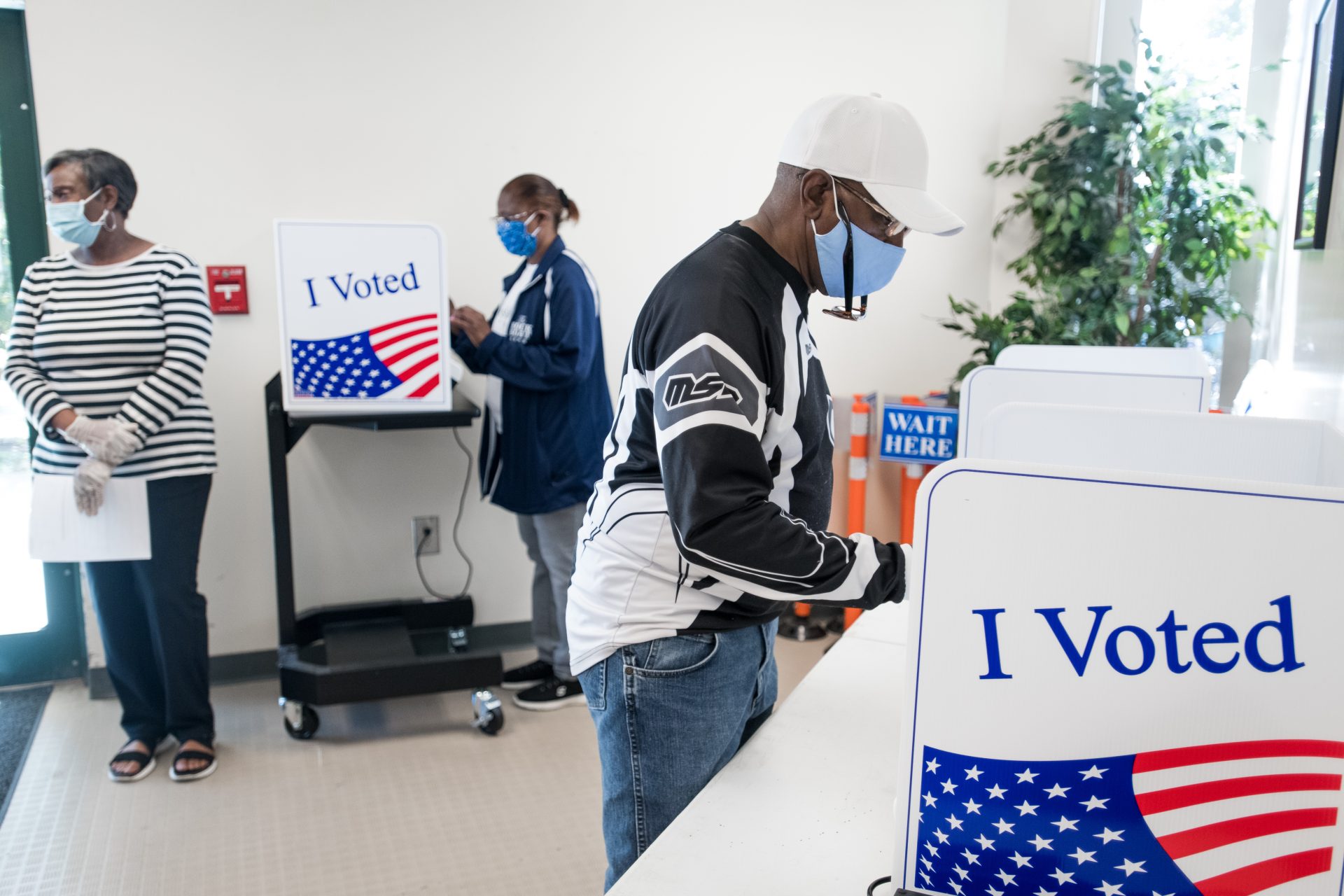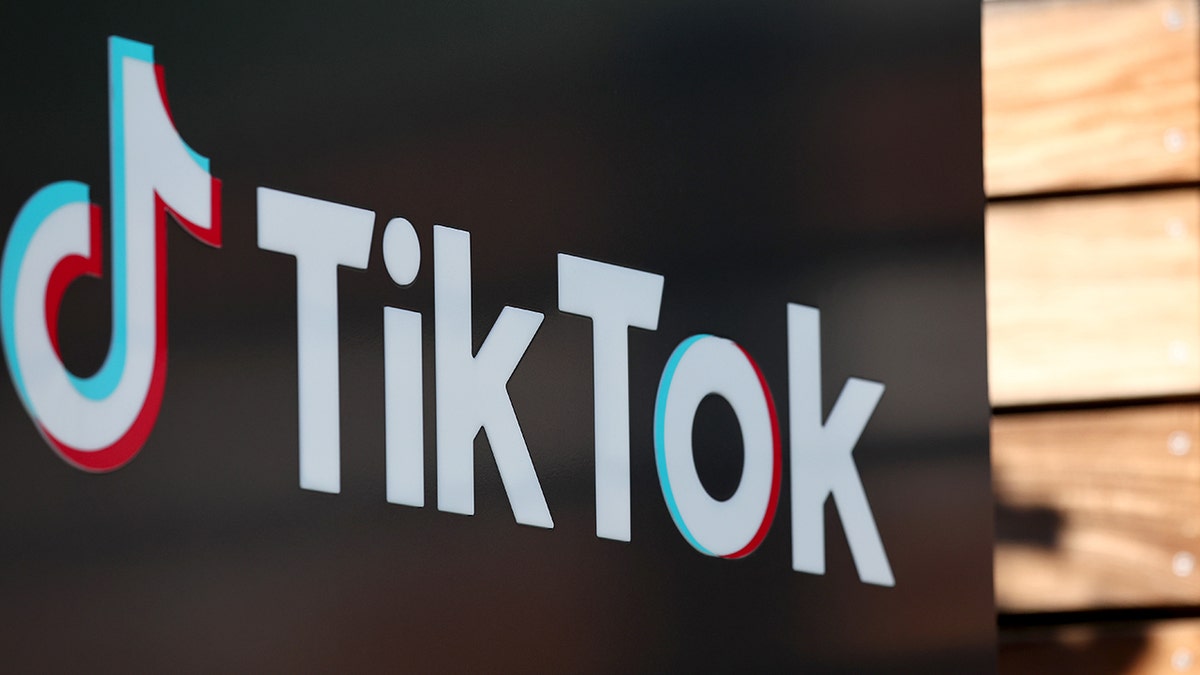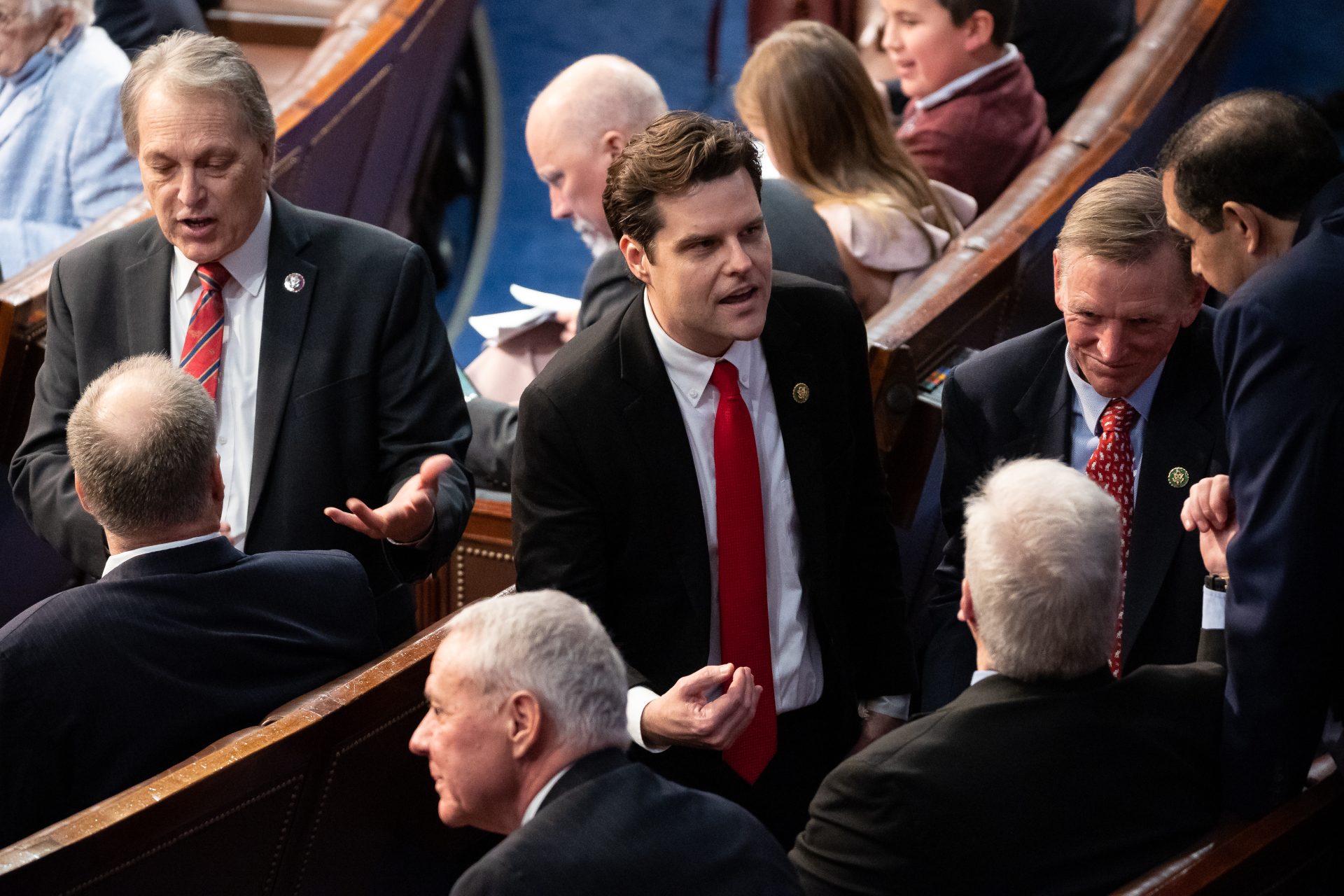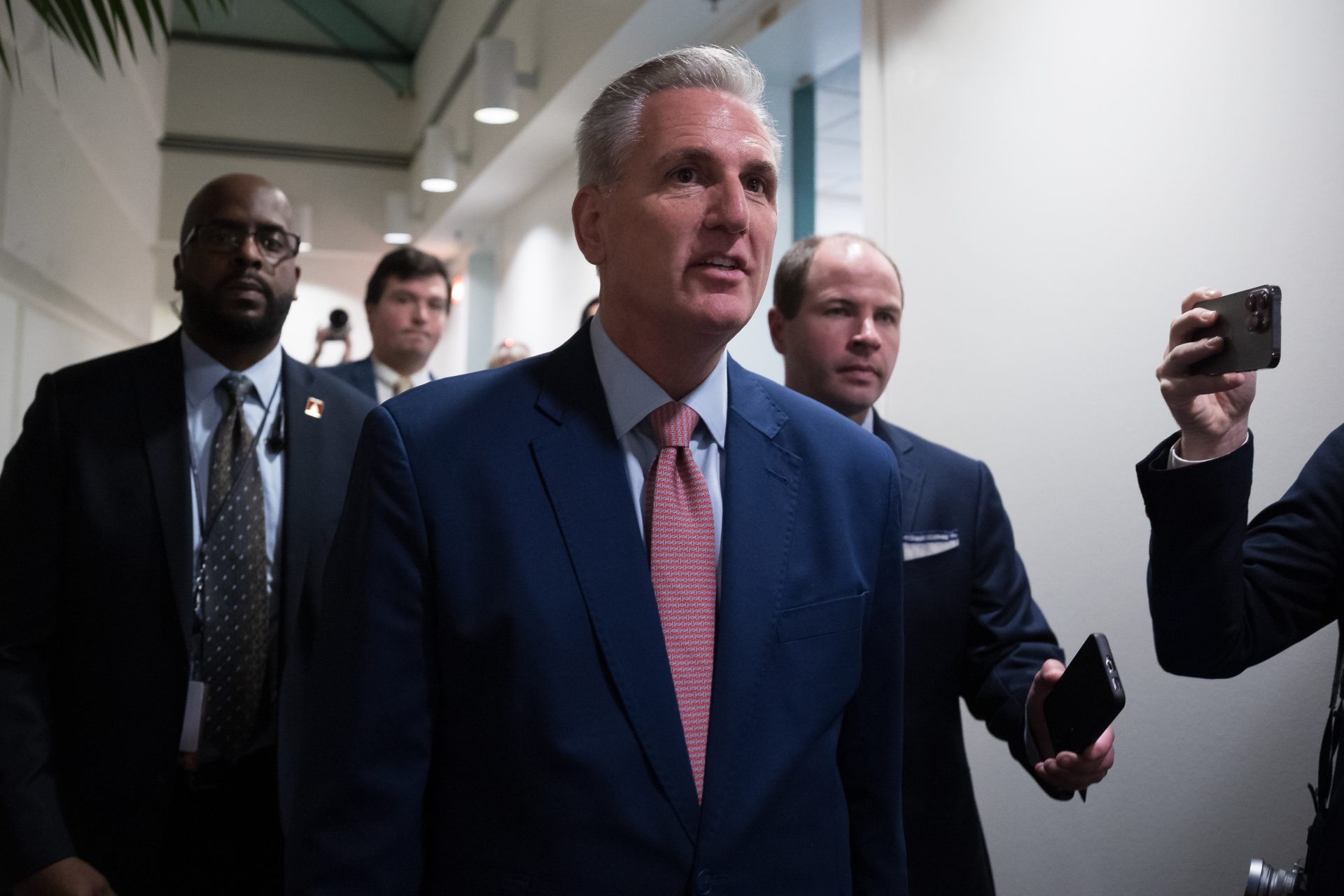Politics, Policy, Political News Top Stories
A Gen Z Florida Republican. A Virginia OB/GYN opposed to abortion. An Arizona progressive who defeated a Trump-aligned Republican.
These state lawmakers are among thousands of Republicans, Democrats and independents gearing up for an energetic and contentious set of legislative sessions that start kicking off in dozens of capitals this month.
Fueled by issues like reproductive rights and gun safety, and many facing questions about how to spend massive budget surpluses amid talk of recession, statehouse leaders in the coming months plan to make decisions that could shape the course of the nation as much as anything coming out of Washington.
Following this mix of rising stars and veteran legislators in Austin, Texas, Lansing, Mich., Harrisburg, Penn., and other capitals is key to understanding the issues that will frame the lives of millions of Americans — and feed a burgeoning 2024 campaign cycle.
Intense debates are also teed up over taxes, spending, labor and much more. These are the state lawmakers to watch.
Pennsylvania
Rep. Joanna McClinton
The Pennsylvania House has been caught up in major drama since the midterms with both parties claiming to hold power over the lower chamber due to surprise post-election twists, including a lawmaker’s death. Weeks of intense intraparty negotiating gave way to some clarity this week when the House named a new speaker after Democrats flipped the chamber in November.
Until this week, Democratic leader Joanna McClinton claimed the speakership, becoming the first woman and first Black woman to hold the role. On Tuesday, however, she stepped aside and gave her support to moderate Democratic Rep. Mark Rozzi, who said he will act as an independent and won’t caucus with either party.
Still, McClinton will continue to wield considerable power within her party as Democrats solidified their statewide standing in the midterms with the elections of Gov.-elect Josh Shapiro and Sen. John Fetterman. And McClinton could make another play for the speakership later this session if Democrats win a handful of special elections that would reestablish their majority.
McClinton said she is focused on expanding health care coverage, affirming abortion rights, ending wage theft and rewriting laws related to the criminal justice system — work that’s influenced by her career as a public defender.
“I’ve got a real passion for pursuing justice, standing up and advocating for folks in a system that is far too crowded,” she said in an interview.
Sen. Kim Ward
Sen. Kim Ward, the top Republican in the Senate, last session became the first woman to be named majority leader.
During her tenure in the Senate, now in her fourth term, she led efforts to implement a work authorization system for employment, and backed expanding protections against child abuse. She also spearheaded legislation mandating statewide Covid-19 disease reporting and limiting the governor’s ability to extend state emergency declarations in pandemics.
Ward, in an interview, said she wants to work with Democrats on issues that will benefit Pennsylvania, not on “ideological issues that are never going to go anywhere.”
West Virginia
Del. Moore Capito
Republican Del. Moore Capito is the next generation of a West Virginia political dynasty — and a test for how much weight the name still carries.
Shortly after winning his fourth term in the state House last fall, he announced a gubernatorial bid. Capito is the son of Sen. Shelly Moore Capito and grandson of former Gov. Arch Moore. His cousin, state Treasurer Riley Moore, is running for Congress in 2024.
“We are going to need somebody with the grit and the experience to be able to take West Virginia to the next level,” Capito said in an interview. Republican Gov. Jim Justice, a former Democrat, is term-limited and thought to be considering a run for the Senate.
Serving as chair of the West Virginia Republican Legislative Committee, Capito deployed a successful candidate recruitment strategy for the 2020 elections that resulted in Republicans picking up 18 seats in the state House, winning a supermajority for the first time.
Capito said his focus in the statehouse since he was elected in 2016 has been on how to attract young people to West Virginia and transform the state into a technology and entrepreneurial hub. He backed the creation of a fintech “sandbox” in 2020 that aims to incentivize tech companies to test products and services within the state by temporarily lifting business regulations. He hopes to expand that into the energy sector this year.
Texas
Rep. Dade Phelan
Following one of the most conservative legislative sessions in recent history, Dade Phelan, the Texas speaker, remains well-positioned to decide how hot the deep-red lower chamber will get this year. In 2021, Phelan, a Republican, oversaw sweeping changes to the state’s abortion and elections laws before they rippled across the country during Texas’ legislative break last year.
Lt. Gov. Dan Patrick has a strong hand in influencing members in the state Senate and setting a multi-item agenda in the chamber this year, and he has also aired frustrations about Phelan and Republican Gov. Greg Abbott since last session. Although Phelan has mentioned taxes and education issues in recent months, he has not yet made an official announcement about his legislative priorities or anything that might shed light on potential conflicts with Patrick.
But Phelan knows how to shepherd contentious legislation. Despite outcries from state Democrats, nearly every GOP priority passed last session — leading the minority party to flee the state for D.C. in a dramatic attempt to halt a special session called to cement new elections laws they considered too restrictive. Abbott threatened to arrest the lawmakers upon their return to Austin, and Phelan himself signed the warrants while also worrying that detaining lawmakers might cause “un-repairable harm” to his chamber.
Iowa
Rep. Pat Grassley
Iowa Speaker Pat Grassley has a famous last name — and it’s long been speculated that he plans to run for his grandfather’s Senate seat when it opens up.
But it may be awhile before the younger Grassley takes on federal politics: Sen. Chuck Grassley, 89, was reelected in November to his eighth term and Pat Grassley has dismissed the notion that he’s been preordained as his grandfather’s successor as a “conspiracy theory.”
Instead, Grassley has focused on solidifying his influence within the state Legislature during his 15 years serving in the Iowa House. Senate Republicans earned a supermajority in November, one of the GOP’s biggest wins in the midterms, and the party is expected to use its boosted statewide influence to enact conservative policies.
Iowa could set an example on school choice — it’s a top priority for Gov. Kim Reynolds, who has tried for years to get legislation approved in the House. Grassley is setting up the infrastructure for her to potentially succeed with the creation of a new education committee this session that will consider changes to the K-12 system.
Virginia
Sen. Siobhan Dunnavant
One of the most interesting — and fraught — fights over Republican ambitions to restrict abortion access is likely to play out in Virginia. Abortion is legal in the state throughout the first and second trimesters, but Republican Gov. Glenn Youngkin is seeking to largely ban the procedure after 15 weeks of pregnancy. Sen. Siobhan Dunnavant is among the four Republicans he’s asked to draft the legislation — an OB/GYN, and the only medical professional in the group.
Republicans took control of the state House in 2021 with a five-seat majority as Youngkin won the governorship. Democrats hold control of the Senate by just one seat. Those narrow margins — and the state’s purple politics — make passing abortion restrictions tricky.
Dunnavant, who represents a competitive district in the Richmond suburbs, has built a voting record since 2016 opposing abortion. She has also expressed support for a Texas law that banned abortions at 20 weeks with exceptions only for the life of the patient or severe fetal anomalies but not for rape or incest.
Florida
Rep. Juan Porras
Republican Rep. Juan Porras will be the youngest member of the Florida House at 25 years old. His election helps mark a new era for Miami-area politics, which has steadily grown redder since Donald Trump’s election in 2016 (Porras’ district includes an unincorporated strip of Miami-Dade County).
“We’re seeing a huge shift, especially here in south Florida,” Porras said in an interview. “A lot of the Hispanic communities and younger communities are leaning more toward conservative ideas and voting Republican.”
In the midterms, Gov. Ron DeSantis became the first GOP gubernatorial candidate to win the county in two decades, carrying downballot Republicans with him to victory.
Porras defeated Democrat Gabriel Gonzalez, a fellow Gen Z candidate.
He has said the statehouse — where he worked as an intern — should bring more accountability to homeowners association fraud, a major issue in his district, which contains sprawling condo complexes with thousands of units. He’s also a supporter of school choice, an issue he’ll work on as a member of the education committee.
Georgia
Sen. Jason Anavitarte
Georgia Sen. Jason Anavitarte helped found the state’s first Hispanic legislative caucus last year with a GOP state representative, a move meant to reflect the rapid growth of Georgia’s Latino populations. There are a record six Hispanic members in the General Assembly this year.
“My Republican colleagues and I aim not only to deliver strong representation to one of our state’s most important communities — but to send a clear message that Hispanic values will be at the front and center of conversations under the Gold Dome for years to come,” Anavitarte said.
Anavitarte got attention in December for drafting legislation to ban the TikTok app in Georgia, a proposal other states tried last year. It mirrors the U.S. Senate-approved measure that would ban the app on government-issued devices over security concerns about it and its Chinese-owned parent company ByteDance, though it is unclear how the House will vote on the issue.
Last cycle, the Polk County state senator pushed for a “constitutional carry” bill, one of Republican Gov. Brian Kemp’s priorities, that would allow residents to carry guns without a license in most public spaces.
Michigan
Sen. Winnie Brinks
Michigan is at the epicenter of Democratic politics after the party flipped both chambers of the state Legislature last fall and maintained control of the governorship. Now, Democrats face tremendous pressure to take full advantage of their trifecta by enacting a slate of progressive priorities. They just have to agree on where to begin.
Enter incoming Senate Majority Leader Winnie Brinks, the first woman to take on the role. Brinks will be working with Rep. Joe Tate, the first Black speaker of the Michigan House, to set that agenda. But the requests from lawmakers, voters and progressive advocates for what gets priority treatment are long.
“We’re ready for this,” Brinks said in an interview. She cited affirming abortion rights — which Michigan voters came out in droves to protect via ballot measure in the wake of Roe v. Wade’s fall last year — as an early order of business. She also wants to change tax policies she says burden working families, like restoring the earned income tax credit and repealing the retirement tax.
Brinks faces the challenge of keeping the peace between the progressive wing of the caucus — which is eager to repeal right-to-work rules and pursue other pro-labor actions — and moderates urging caution and bipartisanship. Brinks herself said Democrats must be “thoughtful about how we attack our agenda.”
She added: “At the end of the day I’m happy to have the challenges of the majority instead of the challenges of the minority.”
Illinois
Rep. Margaret Croke
During her first term in office, Illinois state Rep. Margaret Croke quickly became a voice for the next generation of Democratic leadership. She’s introduced bills that have been signed into law, including one that expands the definition of infertility in Illinois to include same-sex couples, single women, and others looking to start or grow a family.
Croke pushed for the measure after getting a phone call from a constituent — a pediatrician who is gay and who pointed out financial burdens on families like his when insurance isn’t an option.
“I love how that bill came up organically from a constituent,” she said in an interview. It’s not the first bill that she’s taken on with a resident in mind. Croke is actively working on cyber-bullying legislation with the family of a boy who died by suicide after being bullied online.
“I love constituent services. It started with property taxes and helping people get cash back when they needed it. It made me so happy,” Croke said, referring to her work with a Cook County commissioner.
The Illinois Democrat also helped champion a law making Illinois the first state in the nation to require EMTs to be trained to diagnose Alzheimer’s and dementia. And a version of a bill she pushed last year is part of high-profile 2023 legislation that would allow Illinois residents to take civil action against gun manufacturers, importers and dealers whose firearms are responsible for injury or death in Illinois.
Arizona
Rep. Lorena Austin
Rep.-elect Lorena Austin won one of the most closely watched legislative races in the country in a newly-drawn district in Mesa, helping Democrats encroach upon the Republican majority in the state Legislature. She campaigned alongside Seth Blattman and the pair defeated two Republicans: Mary Ann Mendoza, a vocal opponent of illegal immigration and a Trump ally, and Kathy Pearce.
Austin is a descendant of Mexican immigrants and identifies as LGBTQ.
“People are not looking for what we traditionally view politicians to be,” Austin said in an interview. “They’re looking for authentic people who are doing things in the community — who are accessible, who are visible and who they can come to.”
Austin, who works as a community college adviser, wants to improve public education in Arizona, which consistently ranks at the bottom in the nation. She also wants to address the rising cost of housing, which she says is a “resounding” issue in her district and throughout the state.
Minnesota
Sen. Kari Dziedzic
Minnesota Democrats are entering 2023 with a trifecta after the party flipped the Senate in last year’s midterms, opening up another huge political opportunity for Democrats in the Midwest for the first time in nearly a decade.
Senate Majority Leader Kari Dziedzic will have to navigate the Democratic-Farmer-Labor’s slim one-seat majority in the chamber. She has a reputation as a cautious leader who touts working with Republicans. And in an early preview of the DFL agenda, Dziedzdic said there will be a focus on kids’ mental health and education, climate change and economic security.
The state is sitting on a giant $17.6 billion surplus Democrats are eager to use for long-sought progressive causes. Democratic Gov. Tim Walz has cited achieving education and family policies as a top goal, potentially by offering child care subsidies to help families pay for the rising cost of daycare.
Marissa Martinez and Shia Kapos contributed to this report.














